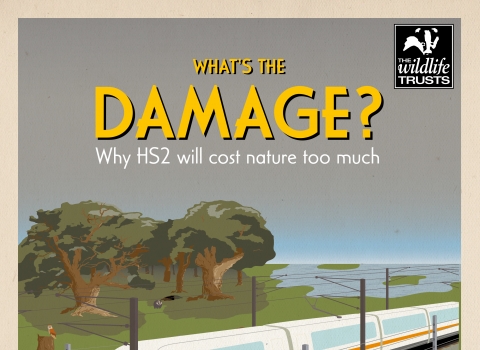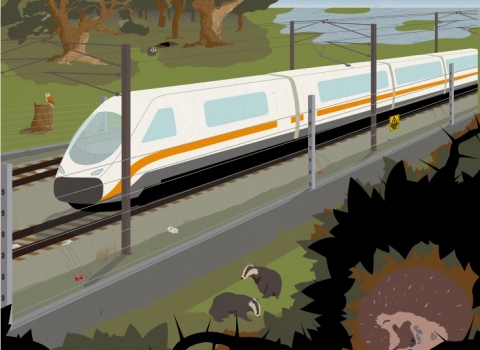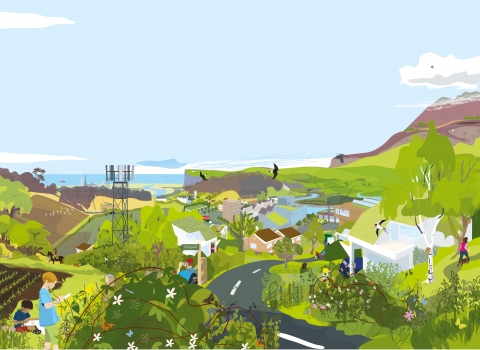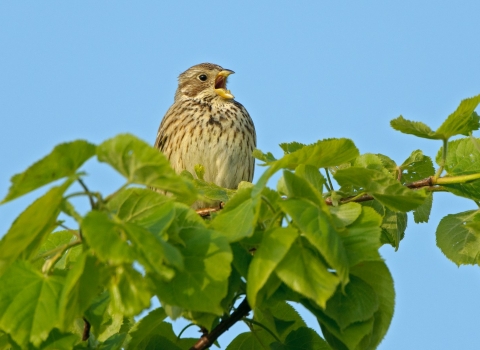A new report published by The Wildlife Trusts today reveals, for the first time, the vast scale of the destruction and impact that HS2 will cause to nature. What’s the damage? Why HS2 will cost nature too much is the most comprehensive assessment of the environmental damage that HS2 will cause. It assesses the broad range of impacts across all phases of HS2 on protected wildlife sites, species and landscape restoration projects.
Drawing on data from 14 Wildlife Trusts affected by the current plans, other charities and landowners along the route, the report shows that HS2 will divide and destroy huge swathes of irreplaceable natural habitat and important protected wildlife sites up the length of England. This will cause permanent loss of nature, increased fragmentation of wild places, and the local extinction of endangered species.
The report finds that HS2’s current proposals will risk the loss of, or significantly impact:
- 5 Wildlife refuges of international importance, protected by UK law
- 33 Sites of Special Scientific Interest which are protected by UK law
- 693 Classified Local Wildlife Sites
- 21 Designated Local Nature Reserves
- 26 Large landscape-scale initiatives, including:
- 4 Nature Improvement Areas awarded £1.7 million of public money
- 22 Living Landscapes – partnership schemes to restore nature
- 18 Wildlife Trust Nature Reserves – many are also designated wildlife sites
- 108 Ancient woodlands, an irreplaceable habitat
- Other irreplaceable habitats such as veteran trees, wood pasture, old meadows
- Extensive further areas of wider natural habitat
- Barn owls and endangered wildlife such white-clawed crayfish, willow tit and lizard orchid. Rarities like dingy skipper may become locally extinct.
A review of the combined impact of the planned HS2 phases from London to Leeds and Manchester demonstrates the huge impact the project will have on wildlife: 33 Sites of Special Scientific Interest (SSI) are at risk from the proposals, as are 693 Local Wildlife Sites.
Since the route of the first phase of HS2 was originally proposed, the Wildlife Trusts have highlighted the significant damage the project will cause, and campaigned for the proposals to be revised to reduce its wildlife impact. This new report, which looks for the first time at the impact the proposals will have across the combined Phases 1 & 2 of HS2, shows that lessons not been learnt from phase 1, and that in many ways the impact gets even worse with the newer sections.
Wildlife Trust BCN Conservation Manager Matt Jackson says: “Shockingly the route for HS2 was chosen before the wildlife impacts were even properly investigated. A high-speed line also makes avoiding wildlife impacts much harder than conventional rail, and sadly the overall impact of the whole route is only now starting to become clear. The government has promised to bring in legislation to make developers improve wildlife, but is making itself exempt for large-scale infrastructure projects. We think they should be setting the standard with national projects, rather than ducking their commitments.”
The first phase of the proposals cuts through south Northamptonshire, carving through a limestone SSSI at Helmdon cutting before it leaves the county through an Ancient Woodland – Glyn Davis Wood, a nature reserve managed by the Banbury Ornithological Society.
The HS2 proposals are currently under review by the government, although they are focussing only on the economic costs of the proposals – estimated to be between 88 and 108 Billion pounds.




